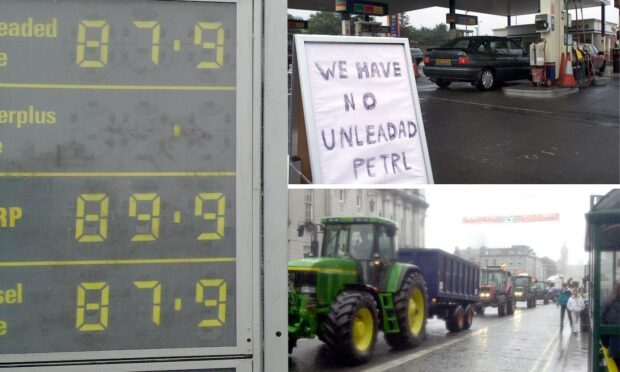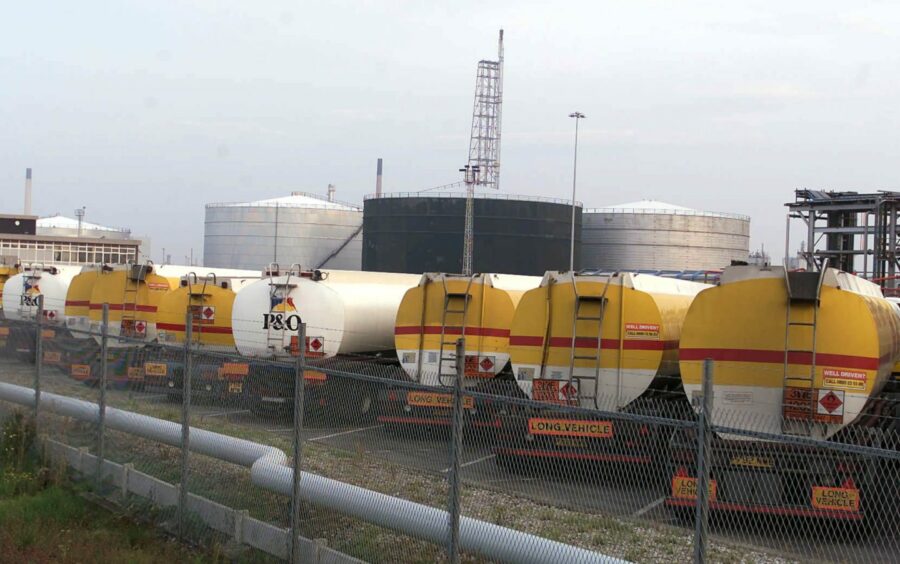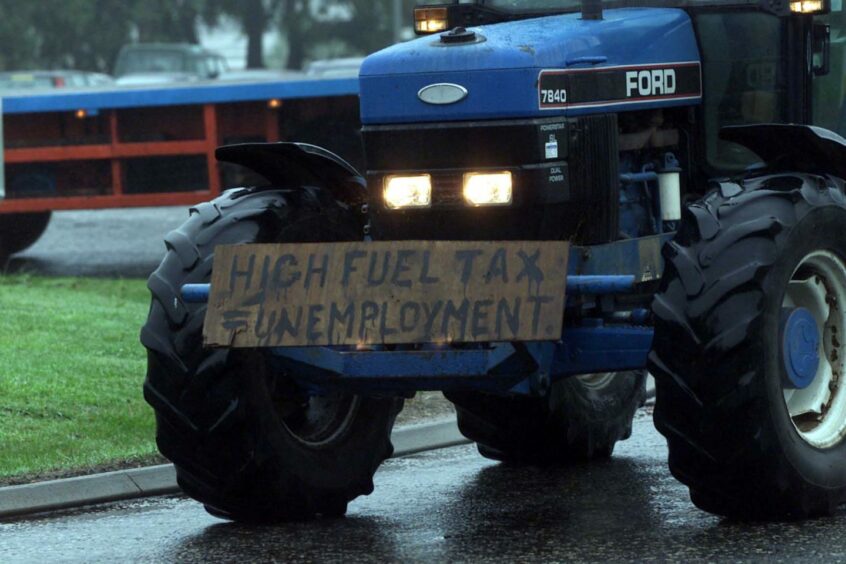In the September 2000 escalating fuel prices sparked national outrage.
Today it seems incredible that bitter protests and blockades could have taken place against petrol prices topping 80p a litre, when today diesel has surpassed £1.70 and unleaded is not far behind.
The price of crude in 2000 was $35 a barrel, when today it’s climbing past $113.
The fuel rises of the Noughties accelerated hard times for the haulage industry, which has struggled ever since to get its head above the water amid dozens of price rises and mini fuel crises since the turn of the century.
Campaigners in 2000 were furious that the Labour government of the day continued to hike prices and refused to reduce fuel tax.
They said: “Imagine a loaf of bread costing £1.58! That would be the price if taxation on it was at 340%, the same as it is for petrol.”
By Saturday September 8 2000 public anger began to bite, and more than 100 lorries staged a go-slow protest on the A1 before blockading the Texaco refinery in Pembroke.
Chancellor Gordon Brown held his ground, saying decisions are made in budgets, not blockades.
Go-slows by lorry and taxi drivers began to erupt in cities.
The government was granted the use of emergency powers to control the distribution of fuel.
By the following Tuesday, the pumps were almost dry with forecourt staff rationing purchases.
The country’s daily 3,000 fuel deliveries had virtually stopped, and truckers blockaded central London.
A handful of lorries broke through a blockade at the BP plant in Grangemouth with a massive police escort.
Protests and blockades spread to Edinburgh and Aberdeen as petrol supplies dried up, and the NHS and Scottish Ambulance Service (SAS) started drawing up contingency plans.
In Aberdeen, the ambulance service had to scramble a helicopter to take two accident casualties to hospital as the city ground to a standstill.
All five main routes into the city were blocked by slow-moving tractors and lorries.
People were beginning to realise the power of the internet to make their point.
A campaign website, fairfuel.co.uk, set up by Alford farmer John French had an astonishing 2,000 hits in a week.
Fellow farmer and campaigner Alistair Smart said the protest wasn’t confined to farmers and hauliers.
“It’s amazing, the amount of folk that have been in touch, from pensioners to ordinary members of the public,” he said.
“I don’t think we ourselves realised the volume of support.
Now there was panic-buying in supermarkets, with Sainsbury’s saying it would run out of food within days, and Safeway rationing bread and milk.
Royal Mail said its 36,000 vehicles were almost out of fuel, schools began to close, rubbish collections were under threat and the railway network pulled its horns in.
In Aberdeen, there were a handful of filling stations received fuel and were restricting sales to £10 only.
The protesting truckers and farmers wouldn’t rule out further action to get government action to bring prices down.
By September 16 the army was on standby to deal with the blockades.
The protests ended, life was returning to normal.
Despite the protesters’ apparent climb-down, their main aim was achieved less than a month later, when Chancellor Gordon Brown announced in that year’s budget that fuel duty would be frozen and vehicle excise duty effectively cut.
Fuel prices continued to rise, though, and there were more protests, though not as destabilising, in 2005 and 2007.
You might also like:
UK inflation: Britons were also being hit in the pocket 50 years ago
Protect and survive: When Scotland was braced for nuclear war in the 1980s





